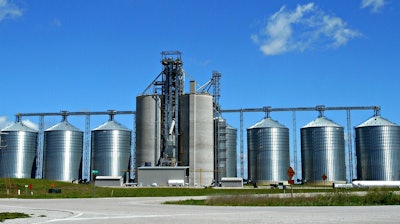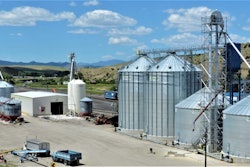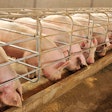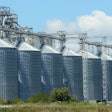
The profit outlook for U.S. grain elevators storing corn and soybeans has improved significantly for the 2023-24 marketing year with buy basis falling and carries returning to futures markets.
The world market is currently awash in grains, and global supplies of corn and soybeans are abundant. The improved market conditions follow two consecutive years of inverted futures markets, which limited the ability of many elevators to earn a profit from storing grain.
The current challenge for grain elevators is simply gaining ownership of bushels. Farmers have been reluctant to sell, as corn and soybean prices have fallen sharply from their peaks earlier this year. That has left elevators with lower levels of grain ownership to take advantage of wider carries and basis levels. Basis has fallen to multiyear lows in some regions of the country.
The delay of grain moving to elevators, however, is expected to be short-lived. According to a new report from CoBank’s Knowledge Exchange, the challenge of acquiring bushels should begin to ease for elevators early in 2024. The rising cost environment will likely compel farmers to sell in January, February and March to generate cash for spring planting and operational expenses. Farmers are also expected to be more willing to sell on price rallies over $5 per bushel for corn and $14 per bushel for soybeans, which will cap any run-up in basis.
“Many grain farmers have the benefit of being in a very strong cash position following last year’s record farm income levels,” said Tanner Ehmke, grains and oilseeds economist for CoBank. “They have been quite content to hold on to their grain since prices have fallen. But higher land rents and borrowing costs, combined with rising prices for inputs like fertilizer, will probably motivate farmers to sell as the calendar turns to 2024.”
Higher storage fees, delayed pricing programs
Some elevators have been able to make up for the lack of ownership through higher storage fees and by offering delayed pricing programs. Delayed pricing allows farmers to deliver grain when it is convenient and price it later, with many elevators charging much higher service fees to cover the elevator’s higher risk of owning unpriced bushels in a carry market. Storage programs have become popular as farmers wait for a rally in futures prices or local basis.
For elevators that have been able to gain ownership of bushels, the transition to a carry market will be awkward for some merchandisers who have been actively trading freight and selling commodities in an inverted market for the past two years. In a carry market, elevators are instead incentivized to store grain rather than sell it.
Supported by strong domestic demand for corn and soybeans, basis is expected to appreciate over time. Cheaper transportation rates plus strong end-user demand among livestock feeders, ethanol plants and soybean crushers are expected to help prevent basis from dropping significantly. The rise in basis, however, will be limited given the ample global supply of corn and soybeans.
The smaller U.S. soybean harvest this year combined with record processor demand has put a strong floor under soybean basis relative to corn. Processor margins have been supported by growing demand for soybean oil for renewable diesel and a record export pace for soybean meal in the absence of Argentine exports.
Ehmke said the biggest wildcard that could affect carry and basis is the U.S. corn and soybean export program.
“The risks largely come from abroad,” said Ehmke. “Chinese demand could suddenly appear for corn or soybeans or disappear for grain sorghum. And a short South American crop would result in futures spreads narrowing considerably, which would incentivize elevators to sell soybeans.”
















